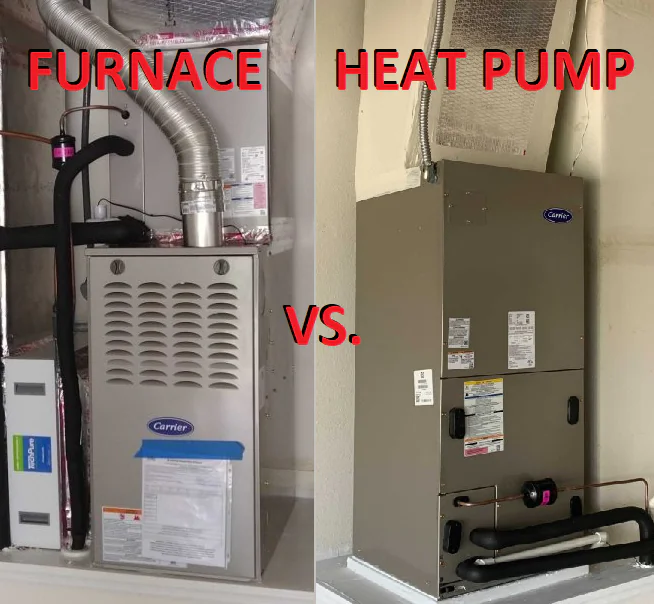This article was inspired by the HVAC School article, “How to Compare Heat Sources for Cost-Effectiveness.” That article (and the information in this article) is based on Ross Trethewey’s energy comparison sheet for fuels at select efficiencies and costs. All tables and their respective data belong to him. Ross Trethewey is the founder and lead engineer of TE2 Engineering and has served as the Home Technology Expert on PBS’s “This Old House.”
It’s about that time of year when we’ll start turning up the heat in our homes. Here in Central Florida, many of us have electric heat pumps, but some of us have gas furnaces. Those who have one type of system may wonder about the benefits of the other. So, in the Florida “cold” season, which system type has the edge?
Before we answer that question, let’s take a look at how each system type works.
Table of Contents
HEAT PUMPS
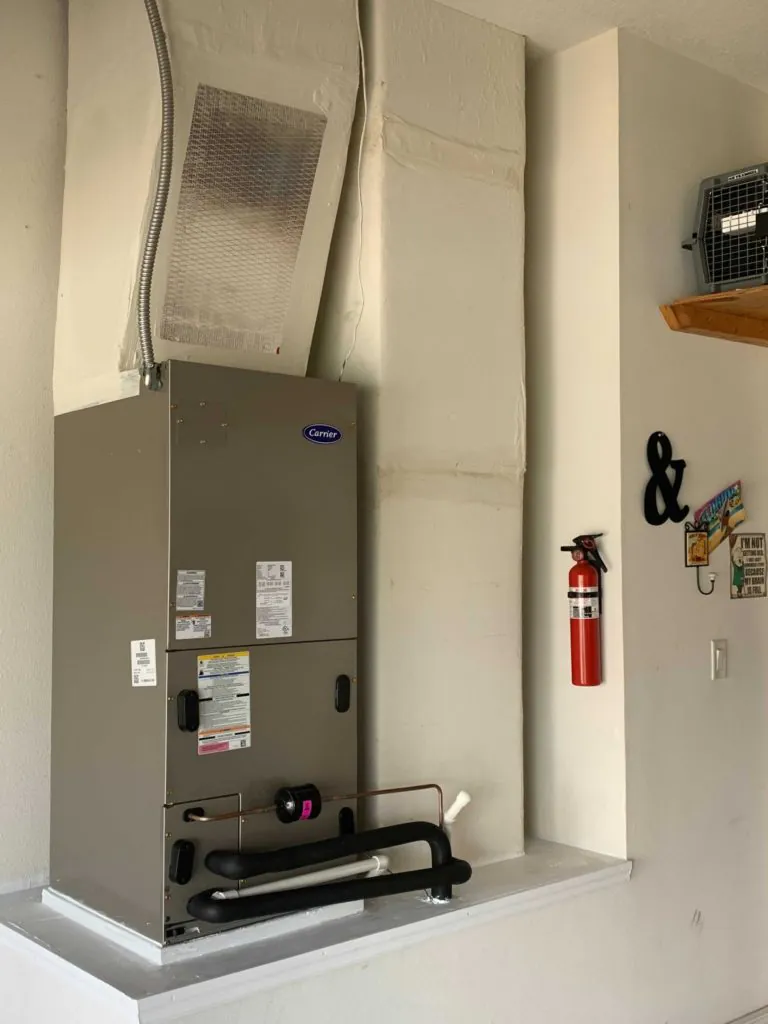
If you live in Florida and have a relatively new A/C system, there’s a very good chance that you have a heat pump system.
Despite their name, heat pumps don’t actually have a “pump” at all. When you switch the A/C into heating mode, the system merely reverses the refrigeration cycle to fill your home with warmth instead of cool air.
In cooling mode, your A/C unit absorbs the heat from the air inside your home and rejects it outdoors. That’s why you feel warm air when you hold your hand over the outdoor unit; that warmth comes from inside your home, and the fan is blowing it away.
In heating mode, the outdoor unit absorbs heat from the outdoors and rejects it inside the home.
Heat pumps have a reversing valve with a slider that shifts the refrigerant flow from one set of refrigerant lines to the other. So, the line that carries cool gas from the air handler to the compressor becomes the line that carries very hot, high-pressure gas away from the compressor. The line that carries hot, high-pressure gas away from the compressor now sends cool gas to the compressor.
GAS FURNACES
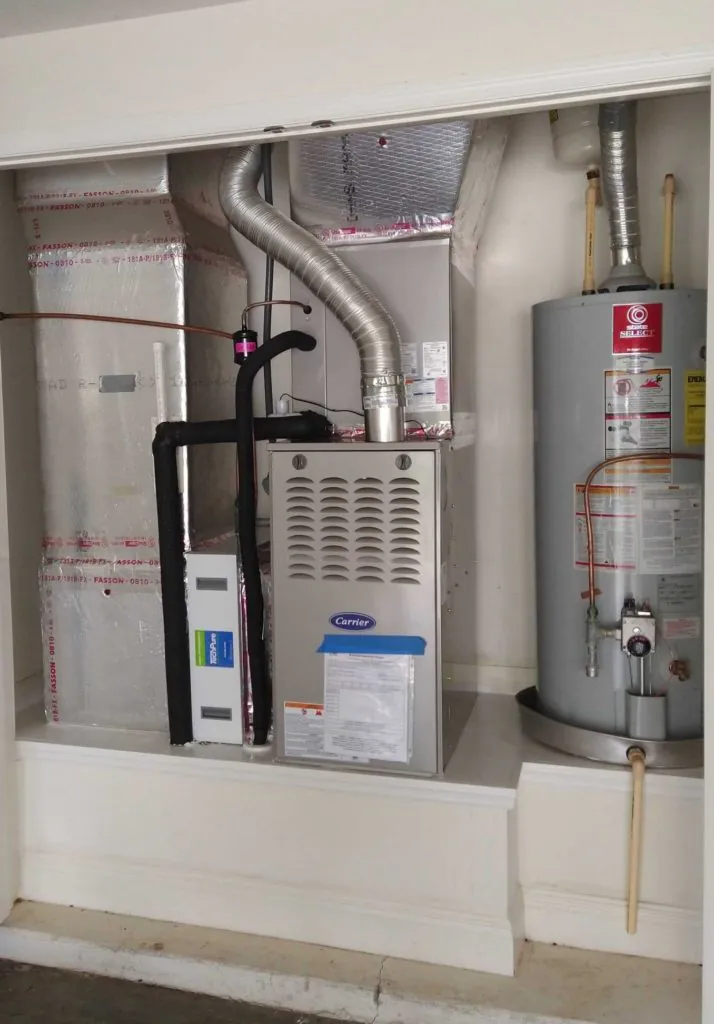
Gas furnaces work a bit differently. They use a gas-fueled flame to warm the air already circulating through your home via your A/C unit.
These furnaces use natural gas, so your home would have to be tied to a gas line outdoors, usually underground. That natural gas feeds into the furnace system and may also supply domestic water heaters, stovetops, pool heaters, and fireplaces.
Your furnace will use a flame to introduce heat to the system, and heat exchangers help that heat go into the air. The return duct moves cold air to the furnace, and a blower motor moves that cold air up through the furnace. The heat exchangers will introduce the gas-fired heat to the air, and that’s how we get warm air from cold indoor air.
The heat exchanger also separates the air going to your home from the combustion products, which include carbon dioxide, water vapor, and sometimes carbon monoxide.
HOW TO COMPARE ENERGY COSTS HEAD-TO-HEAD
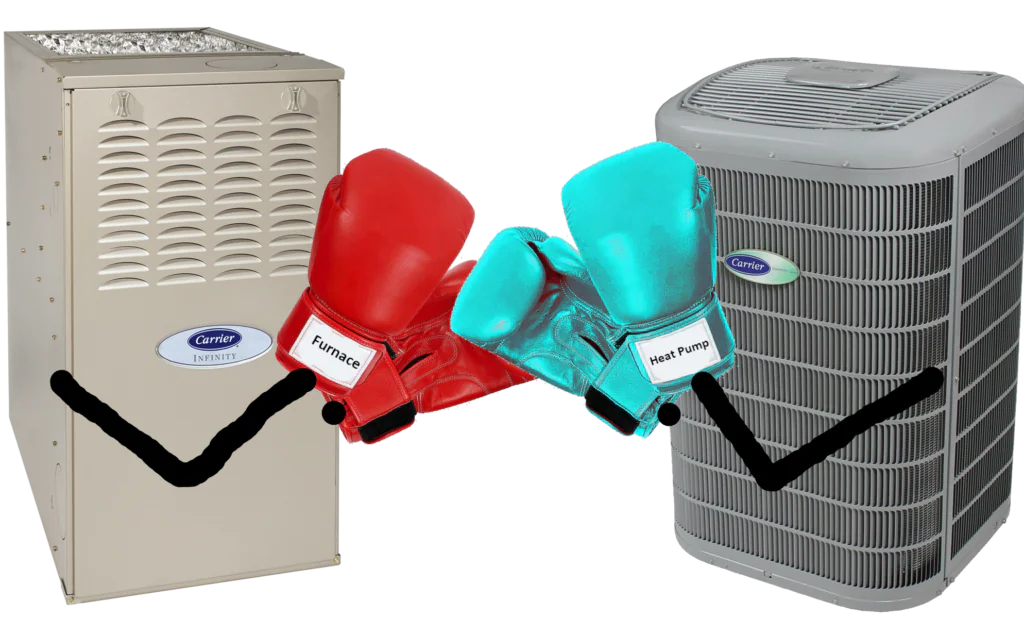
It can be difficult to assess the energy costs of natural gas and electrical systems because they use different metrics. Electricity is billed by the kilowatt-hour (kWh), and natural gas is billed by the therm.
Get out your calculators; we’ll have to do a bit of math here.
HEAT PUMPS
You can use your electric bill to calculate your rate per kilowatt-hour. If the rate isn’t directly on the bill, you can subtract the taxes from the amount billed. Then, you divide your power bill by the power consumed.
We’ll use nice and even numbers for the sake of simplicity. Let’s say you used 1000 kilowatt-hours. After deducting taxes, you paid $100 for electricity that month. You would divide 100 by 1000, and you would get 0.1 as your answer. In that case, you would be paying $0.10 (ten cents) per kilowatt-hour.
With an electric heat pump, you also have the coefficient of performance (COP). COP measures efficiency, and a higher COP value can slash your electricity costs. If your heat pump has a COP of 1, then you would pay $0.10 per kilowatt-hour. However, if your heat pump has a COP of 3, you would only pay $0.033 (just over three cents) per kilowatt-hour.
Ross Trethewey of TE2 Engineering (and This Old House) put together a table that can help you figure out how much you would spend per kWh based on the cost of electricity in your area and the efficiency of your heat pump.
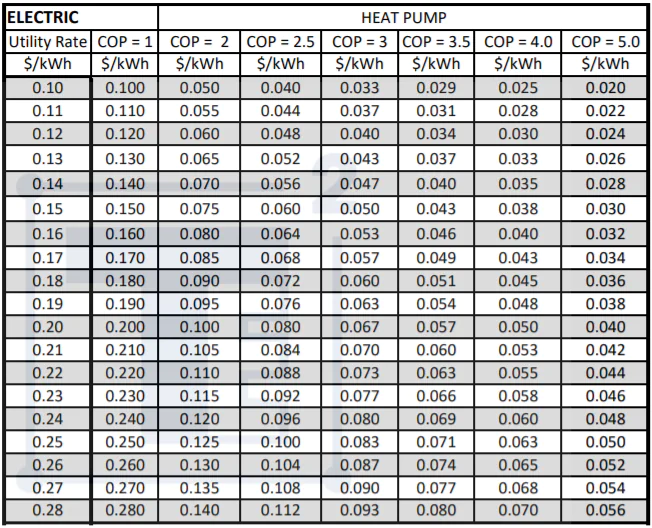
Last November (2020), the cost of electricity per kWh was $0.12 in Clermont, FL (per Utilities Local). Since most air-source heat pumps have a COP value between 2 and 4, you could expect to pay a minimum of $0.03 per kWh or a maximum of $0.06 per kWh, depending on your heat pump’s efficiency.
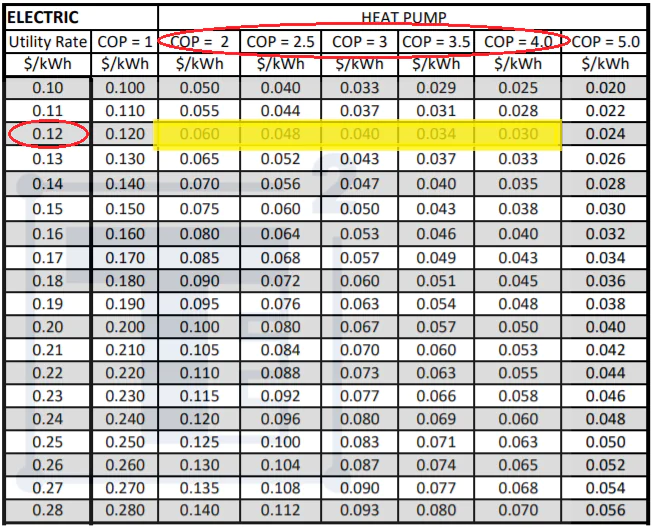
GAS FURNACES
Natural gas is a bit trickier, especially because you may also see pricing per thousand cubic feet (Mcf). Regardless of which unit you see, you would need to find a natural gas unit on a level playing field with electricity (kWh).
So, let’s start by converting Mcf to therms. One Mcf equals 10.37 therms. Last November (2020), the price of natural gas in Clermont, FL, was $23.61 per Mcf according to Utilities Local. If we divide that price by 10.37, we will see that a therm of natural gas costs just under $2.28.
Ross Trethewey also made a conversion chart for comparing therms of natural gas to kWh.
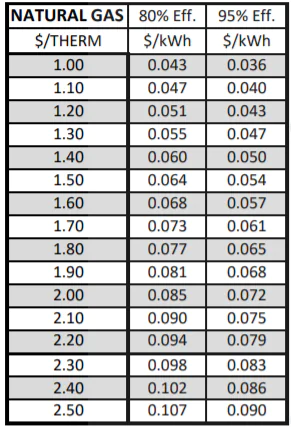
In the case of our example, where we pay ~$2.28 per therm, we can round that up to $2.30 per therm. We would pay just under $0.10 per kWh on an 80% efficiency furnace and around $0.08 per kWh on a 95% efficiency furnace.
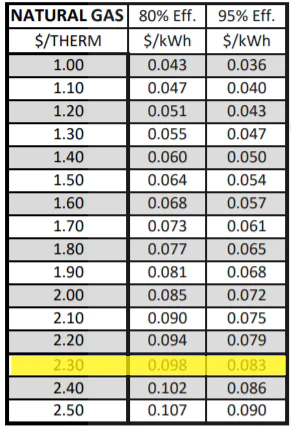
WHICH HEAT SOURCE WINS IN CLERMONT, FL?
Of course, natural gas and electricity prices have changed since last November, but electricity is generally cheaper than natural gas in Clermont, FL. For that reason, a heat pump is almost always going to be the better option for energy savings (and safety as well) in the Central Floridian climate.
Heat pumps work well in our climate; even though it can get cold by our standards, the temperature usually doesn’t get too cold for the heat pump to absorb heat from the outdoors. (Though nowadays, we’ve seen heat pumps work well in cold climates like Maine and Norway.)
Heat pumps also don’t have a carbon monoxide risk. Carbon monoxide (CO) is a colorless, odorless gas that occurs as a product of incomplete combustion in a gas appliance. CO can be deadly in excess amounts because CO molecules replace oxygen molecules in the blood. Dangerous (but not immediately deadly) amounts of CO can cause symptoms that closely resemble the flu, and even higher amounts of CO can cause unconsciousness or death.
SOMETHING TO KEEP IN MIND
When we say that heat pumps are typically better for energy savings and comfort in Clermont, FL, we don’t mean that’s the case everywhere.
For example, Florida has one of the highest average natural gas prices in the United States, but New Jersey has one of the lowest. So, a natural gas furnace might be a more cost-effective heating option in Newark, NJ than in Clermont, FL. New Jersey also has a colder climate than Florida, and a gas furnace might be able to provide better comfort than a heat pump.
Overall, you can only know what’s best for you by looking at your local utility rates and the efficiency of your equipment. But in Central Florida, we highly recommend going with an electric heat pump due to the energy savings, safety, and relative comfort for the price.
If you live within Kalos’s service area, we can replace your gas furnace with a heat pump system. You can select a system within your budget, customize your system accessories, and even request to enroll in a maintenance plan for your new heat pump with our Instant-Quote tool.

